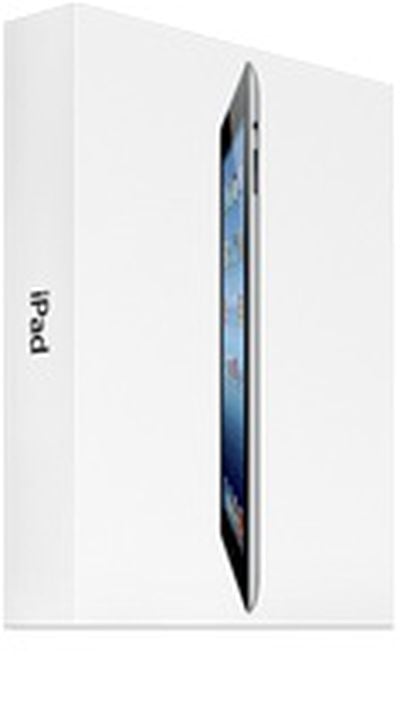 Research firm IDC today released its data on tablet shipments for the fourth quarter of 2011, pegging Apple at 54.7% of the market. Apple's share is down from 61.5% in the previous quarter, with the decline due in large part to a relatively strong debut for Amazon's $199 Kindle Fire tablet, which garnered 16.8% of the market.
Research firm IDC today released its data on tablet shipments for the fourth quarter of 2011, pegging Apple at 54.7% of the market. Apple's share is down from 61.5% in the previous quarter, with the decline due in large part to a relatively strong debut for Amazon's $199 Kindle Fire tablet, which garnered 16.8% of the market.
"Amazon's widely-reported entry into the media tablet market with a $199, 7-inch product seemed to raise consumers' awareness of the category worldwide despite the fact that the Fire shipped almost exclusively in the U.S. in the fourth quarter," said Tom Mainelli, research director, Mobile Connected Devices. "As a result, products across the pricing spectrum sold well, including everything from Apple's premium-priced iPads (which start at $499) to Pandigital's line of Android-based, entry-level tablets (which start at $120). The success of market leader Apple was particularly noteworthy, as the company's shipment total for the quarter represents an increase of 110.5% from 4Q10."
On the strength of the Kindle Fire, Android has seen its share of the tablet market rise from 32.3% to 44.6%, giving iOS and Android 99.3% of the market. Research in Motion's BlackBerry operating system holds the remaining 0.7% of the market, while HP's webOS has disappeared from the market following the company's discontinuation of its TouchPad.
IDC predicts that Android as a whole will overtake iOS in market share by 2015, but Apple's single-vendor strategy will see the company maintain its dominance in revenue through the end of the 2016 forecast period and beyond.
IDC's data measures shipments into the sales channel and not sales to end users, meaning that its data includes units sitting on store shelves that are not being purchased by customers. Given that Apple has repeatedly noted that it is selling every iPad it can make and other vendors have had difficulty moving their products off of store shelves, Apple has generally been regarded as having a higher end-user market share than suggested by IDC's numbers. But with the apparent success of the Kindle Fire, that disparity in shipments versus sales may be shrinking somewhat.
























Top Rated Comments
By "high-end" tablets, you really mean TABLETS (iPad) vs. e-readers (Fire)
Correct. The Fire is NOT a tablet, it's an e-reader. It doesn't deserve to mentioned in the same article as the iPad, let alone compared in terms of sales (or, even worse, "shipped").
Obviously, the iPad is the only game in town when it comes to tablets. But that story gets pretty old and boring if you're an analyst or reporter. So what do you do? Invent a bold competitor in the "tablet" category (nevermind that it's not actually a tablet) and create sensational headlines and stories about how this scrappy little challenger is making gains against the industry heavyweight.
Problem is, it just doesn't pass the laugh test. The Fire has:
no front camera
no rear camera
no microphone
no bluetooth
no GPS
no accelerometer
no compass
no gyroscope
no video out
no ambient light sensor
lower resolution
less RAM
worse performance
less storage
no App store with 200,000 apps
and, finally, it's not full size.
It's like telling me you have a new car, then taking me to the driveway and showing me a set of 4 wheels. They might be really nice wheels, but it still isn't a car.
Do shipments mean sold to the consumer or do they mean sold to the retailer?
If it's the latter, what's the point in researching and publishing these numbers?
Pardon my ignorance.
I am admittedly an Apple fan boy, but i'm so tired of these unsubstantiated claims that the Kindle Fire is selling significantly at all. It is a nice device, but since Amazon refuses to break out sales figures by product, simply lumping all kindle products in one category, it is sloppy to make any assumptions about individual product sales. If anything the iPad with Apple's massive marketing and PR push is helping drive sales of the Kindle Fire, rather than the other way around.
Don't forget that the Kindle Fire is essentially the same hardware as the failed RIM Playbook, granted with much better software and commerce ecosystem. But even so, it just boggles the mind that where all others have failed miserably Amazon is succeeding.
I argue, recklessly and in a factual vacuum, that Amazon is selling a majority of sub $100 Kindles and a few Kindle Fires. I'll stick by this until Amazon chooses to share a sales (to consumers not channel sales) breakdown by individual product. The only reason i can see for them to bury the Kindle Fire's sales in aggregate with all Kindle sales, is because they are embarrassingly dismal at this time.